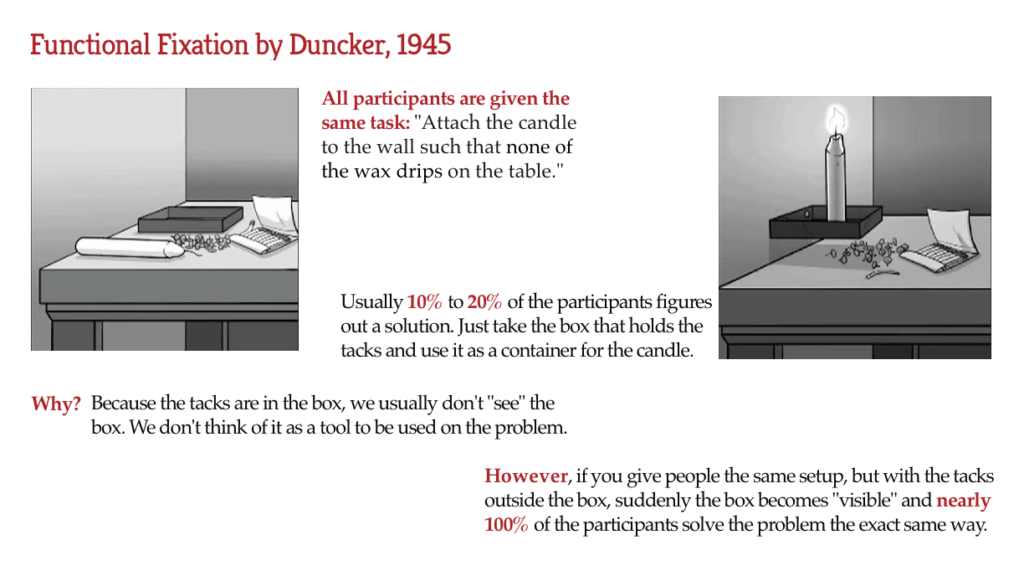
The Artifact Concept and Inferences about Function
Professor Tamsin German of the CEP has been exploring the cognitive basis of the (almost) uniquely human ability to make and use tools. To connect to her website, click here, and here for publications.
Tool use is one of our species’ most notable adaptations. But what cognitive competences make it possible? Daniel Dennett suggested that we have an explanatory mode for understanding tools, which he called a “design stance”—we explain what features a tool has by reference to the problem it was designed to solve. Following this suggestion, a number of cognitive scientists have proposed that the cognitive architecture reliably develops an inference system specialized for reasoning about tools, which includes a concept defining a tool’s function as that which it was designed to do.
Adults and older children (6+) do conceive of an artifact’s function as the goal or function its creator intended it be used for, and some have claimed that this true of children 5 and under as well—that the artifact concept starts out having this form and stays that way throughout life.
In contrast to this position, German argues that “original intent” does not arise until later (ages 6-7). Instead, the function concept is built from “theory of mind” components, including concepts of goal or intention: for a 5-year-old, a tool’s function is any goal intended by its current user, regardless of the goals and intentions of its creator. On this view, during development the earliest version of the artifact concept involves merging elements from two more basic domain-specific inference systems: the theory of mind system and a system for understanding object mechanics. Later (~6 years of age), there is a conceptual change, in which a new artifact concept emerges, one that privileges the function intended by the tool’s designer/creator.
Function concepts and problem solving.
German and Defeyter (2000) first provided evidence for this view in an ingenious experiment involving problem solving. They used a child-friendly version of the functional fixedness task introduced in 1945 research by Karl Duncker:

In functional fixedness tasks, subjects must solve a problem using a tool in an atypical way—for a goal that differs from the goal its creator had in mind when making it (e.g., they must use a box as a step instead of as a container). The subject is brought a set of materials for solving the problem, including the tool in question. In one condition, the tool’s typical function is subtly “primed” (e.g., the box has things in it—i.e., it is serving its typical function as a container); in the other condition, the typical function is not primed (e.g., the box is empty). When the tool’s typical function is primed (but not otherwise), adults are slower to solve a subsequent problem where the tool must be used in an atypical way. This phenomenon is called “functional fixedness”. German and Defeyter reasoned that adults (and older children) show functional fixedness because their artifact concept defines “function” in terms of the goal the tool’s creator had in mind: i.e., its typical function. But if children 5 and under have a different concept of an artifact’s function—if their concept defines the tool’s function as any goal intended by the current user—then using a box as a step (e.g.) rather than as a container should not slow them down. This leads to a counter-intuitive prediction: when typical functions are primed, 5 year olds should solve functional fixedness problems faster than 7-year-olds. That is exactly what German and Defeyter found. When the tool’s function is not primed, younger and older children perform the same. But when the tool’s function is primed, this slows down the 7-year-olds but not the 5-year-olds. This is one of the few cases in which younger children outperform older ones at problem-solving.
Conceptual structure or knowledge packets?
Is this because older children, but not younger ones, have a pre-existing package of knowledge about the typical functions of certain tools, such as boxes? No. German showed the same effects with novel artifacts, ones where the functions were not known to the children prior to the experiment (Defeyter & German, 2003). Thus older and younger children were on an equal footing with respect to their knowledge about the tools in question. That 7-year-olds were at a disadvantage only when the novel tool’s function was primed means that it is the concept itself that is organizing problem-solving (through organizing the knowledge base): Differences in how much the children know cannot in principle account for the difference. This may be the first demonstration that differences in the abstract architecture of a concept can cause differences in practical problem-solving.
Is functional fixedness cross-cultural?

Shuar village, Amazon
It appears that the adult form of the artifact concept develops reliably across cultures. Through a collaboration with CEP alumnus Clark Barrett of UCLA, German’s functional fixedness task was given to a population of Shuar hunter-horticulturalists in a remote area of the Ecuadorian Amazon (German & Barrett, 2005). The reason was as follows: Many cognitive scientists believe that high level cognitive competences, such as artifact concepts, are trained through culturally specific experiences. Among Shuar and other foraging people, the same tool is often used for many different purposes. Moreover, Shuar have few manufactured tools. In contrast, the typical American is exposed to a huge array of special-purpose—indeed, single purpose—tools because so many are produced by industry (coffee makers, olive pitters, lawn mowers, etc). If the artifact concept were built via domain-general learning processes trained on culturally specific experiences, then the “creator’s intent” should be part of the artifact function concept for Americans, who should show functional fixedness effects. But the Shuar, who use the same small set of artifacts for many different purposes, should develop a different artifact concept, one based on any goal of the current user. The results were clear cut: Shuar adults, like Americans, show functional fixedness effects. This is not predicted by the domain-general learning view, and suggests instead that the adult form of the artifact concept (which privileges creator’s intent) is a universal, species-typical aspect of human nature.
Function versus naming: different processes?
What, then, are we to make of prior studies in the literature supporting the idea that creator’s intent is part of the 5-year-old’s artifact concept? German and Johnson (2002) show how these apparent contradictions can be reconciled. They note that three different tasks have been used: (i) Categorization and naming (“What is it?”), (ii) Function judgment tasks (“What is it for?”), and (iii) problem solving tasks (e.g., functional fixedness tasks). They argue that (ii) and (iii) tap the same process, but that (i) taps categorization /naming processes that, unlike function tasks, do privilege the category/ name designated by the creator/ namer of the artifact. They then test this in two experiments. They compared children’s function judgments when they can choose between (a) the creator’s goal, (b) an intentional use by the present owner (who is not the creator), or (c) an accidental use by the present owner. They found that 5-year-olds think the tool’s function “is” that of the current user, as long as its use to achieve that goal was intentional. (Prior work showing a preference for creator’s goal had not controlled for intentionality; it had only compared creator’s goal with accidental uses). German and Johnson then showed that categorization and naming tasks do indeed follow a different pattern (they are “baptised” by their creator), as predicted. This paper is elegant in that it brings order and clarity to a previously complicated and seemingly contradictory literature.
Why should tool concepts privilege the creator’s intent?
If the evolved architecture of the human mind reliably develops a domain-specific artifact concept, then this cannot be for the beauty of pure contemplation—natural selection doesn’t work that way. One would only expect the evolution of such a concept if it had actual effects on tool-using behavior. German’s work on the artifact concept and functional fixedness is the first to show that problem-solving performance differs as a function of the nature of the artifact concept one has. But is functional fixedness a (costly) byproduct of a beneficial adaptation? Priming the function intended by the tool’s creator slows one down when the tool must be used for an atypical function. But what happens when the tool is subsequently used for a typical function? Does priming a tool’s typical function speed problem solving when the tool must subsequently be used for the same, typical function? If so, is this part of an adaptation for social or cultural learning, which causes one to attend to the design function of a tool because that is the best indicator of what problems it is best-suited for solving? Stay tuned for an answer…






